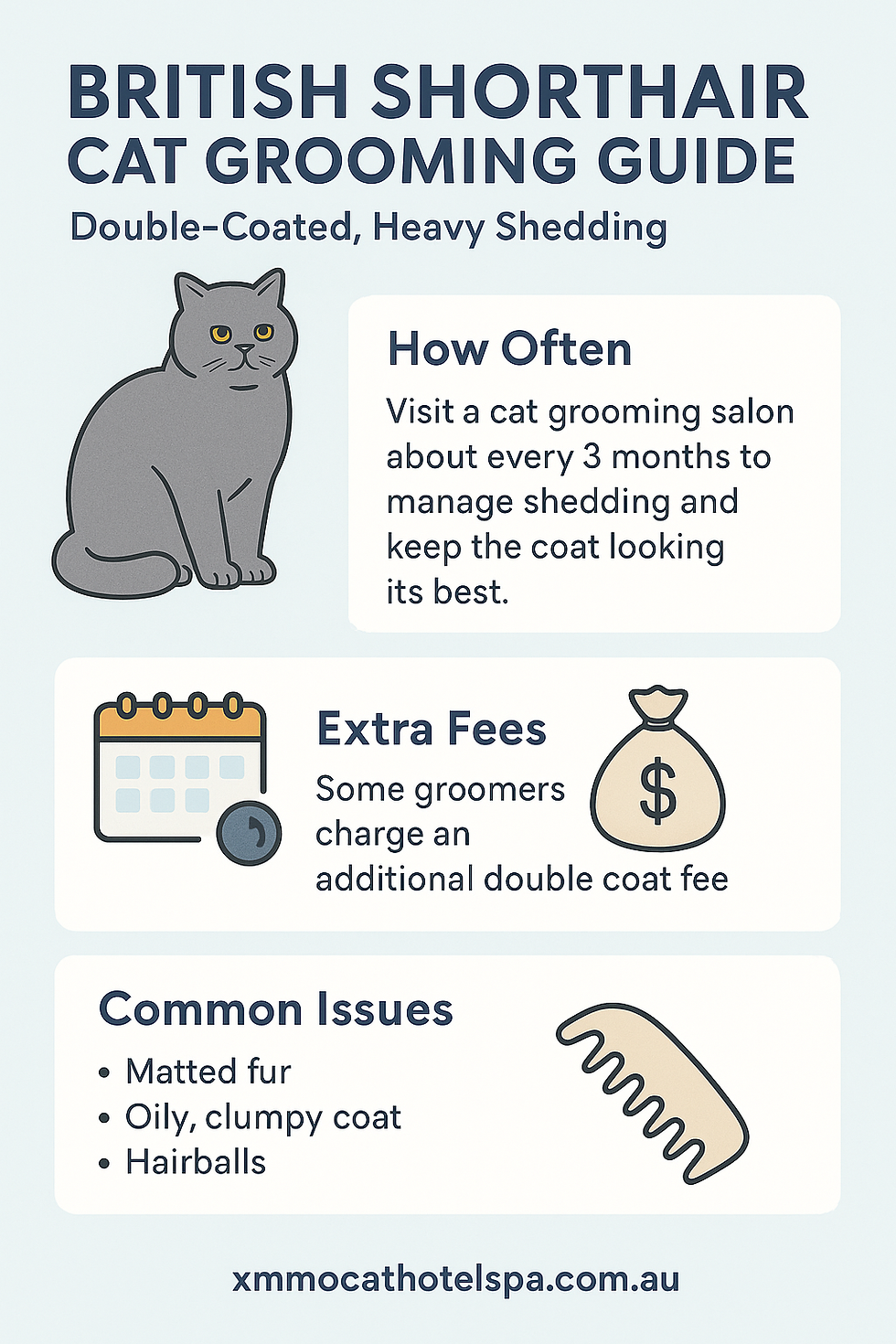Grooming Guide for British Shorthair Cats: What Every Owner Should Know
- Tiara Kim

- Jul 20
- 2 min read
British Shorthairs are one of the most popular cat breeds in Australia — and for good reason. With their plush double coats, round faces, and easy-going nature, they make perfect companions for individuals and families alike.
But while they may seem low-maintenance at first glance, British Shorthair cat grooming is essential for keeping their thick fur healthy and your home free from endless tumbleweeds of fur.

🧼 British Shorthair Coats: Double Trouble
British Shorthairs have dense double coats, which means they have a soft, insulating undercoat beneath a thicker outer layer. This gives them that iconic plush teddy-bear look — but it also means they shed quite a bit, especially in warmer months.
Why Grooming Matters:
Their undercoat traps loose fur that doesn’t always fall out on its own
Without regular brushing, they’re prone to shedding all over your home
If not properly maintained, the coat may mat or feel greasy over time
Regular brushing also helps reduce hairballs
✂️ How Often Should You Groom a British Shorthair?
For most healthy British Shorthairs, a full professional cat grooming session every 3 months is ideal. This helps remove excess undercoat, reduce shedding, and keep their coat plush and healthy.
At home, you should:
Brush once or twice a week with a slicker or deshedding brush
Wipe with a damp towel if they’re dusty or shedding more than usual
Monitor for signs of dandruff, knots, or excessive grooming
Professional cat grooming salons may charge a double coat fee, especially during high-shed seasons (spring and summer) when more undercoat removal is needed.
🐾 Common Grooming Issues in British Shorthairs
Seasonal shedding: Heavy during spring and summer
Dandruff: Often caused by dry skin or lack of brushing
Greasy fur: Especially around the lower back and tail
Build-up of dead fur: Can cause overheating or skin irritation
These issues are easily managed with regular cat grooming, both at home and in a salon. A well-groomed British Shorthair will have a glossy, even coat and minimal shedding.
British Shorthairs may not need daily attention like long-haired breeds, but they do benefit enormously from a routine cat grooming schedule. By keeping up with brushing and visiting a professional groomer every few months, you’ll help your cat stay clean, comfortable, and oh-so-huggable.



Comments